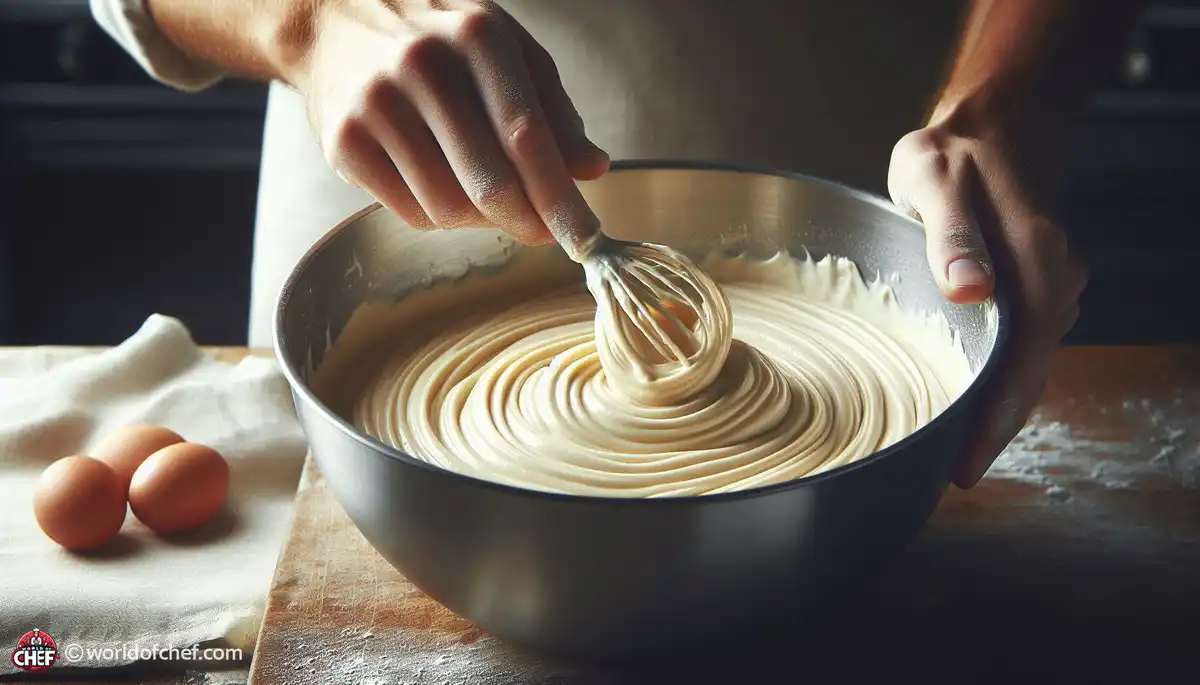
Simmering with Spices: Infusing Flavor into Your Dishes
Emery Donley - Oct 8, 2024 - 8 min read


Consistency happens to be the most necessary component in a successful bake. For cake batter, consistency will prove to be extremely necessary as achieving perfect consistency paves the way for all the other stages that occur during baking. Imagine a cake that has dense, heavy texture versus the light, fluffy, moist one. The difference all lies in the consistency of the batter. It's the basis on which your entire cake-building process sits. If the consistency of the batter is not perfect, then your cake cannot rise right, and a less desirable finished product follows.
Getting just the right cake batter involves a balance of wet and dry ingredients. Too much liquid will make a batter too wet and runny, whereas too little will mean it'll be too thick, dense. It all needs just the right amount. This, therefore means that the strict following of the recipe and measuring the right amount of each ingredient for achieving the proper wet-to-dry ratio is necessary.
The most important thing for a cake batter to achieve the right consistency is the temperature. Butter, eggs, and milk must be softened before adding them to the cake batter. This is because ingredients soften when at room temperature so they mix easily and thoroughly for a more uniform smooth batter. When cold, it can result in uneven, lumpy batter from ingredients. Moreover, prepping ingredients at room temperature ensures better emulsification and a stable batter in general.
Perhaps the most common method of getting cake batter to the right consistency is through creaming. This takes two elements: butter and sugar, which are beaten until light and fluffy. In doing this, it introduces air into the mix, which is essential in providing a tender, airy crumb in the finished cake. Proper creaming also ensures even distribution of sugar throughout the batter, meaning better texture consistency.
Folding is the final technique for getting to that perfect cake batter consistency. It's particularly used in delicate mixtures like whipped egg whites or flour. Folding means gently combining ingredients without allowing them to lose air and become deflated. The usefulness of this technique will also be applied to very liquid batters that demand airiness, such as sponge cakes and chiffons. Proper folding makes sure that the batter stays light and fluffy, with a tender and delicate crumb.
Even with proper measurement and technique, it is not uncommon for cake batter to require a bit of adjustment to get the right consistency. If the batter is too thick, you can add a small amount of liquid, such as milk or water, to thin it out. On the other hand, if the batter is too runny, a little more flour can be added to thicken it up. These adjustments should be made gradually, adding a little at a time and then mixing well after each addition until the desired consistency is reached.
The most common mistake when getting the right consistency for cake batter is overmixing. Overmixing of the batter can lead to gluten development, resulting in a tough, dense cake. Avoid overmixing by mixing the batter until the ingredients are just combined and there are no streaks of flour. Folding gently will help avoid overmixing and provide a tender, delicate crumb.
Too Thin Batter: If your cake batter is too thin, it may be tempting to take a spoonful of flour and add it to thicken. But since that may throw off the proportions of ingredients, your cake may be probably dry and dense. Instead, add small amounts at a time, mixing well after each addition until you get your desired thickness. If it is still too thin, you can refrigerate it for a short period to firm it up before baking.
If your cake batter is too thick, you can thin it out by adding small amounts of liquid, such as milk or water, to it. Again, these should be made in increments and well mixed after each addition until the right consistency is achieved. If the batter is still too thick, you can also try folding in a little whipped egg whites to lighten it up and add some airiness.

Emery Donley - Oct 8, 2024 - 8 min read

Russell Comeaux - Oct 8, 2024 - 8 min read

Walter Backus - Oct 7, 2024 - 8 min read

Samantha Thames - Oct 7, 2024 - 6 min read